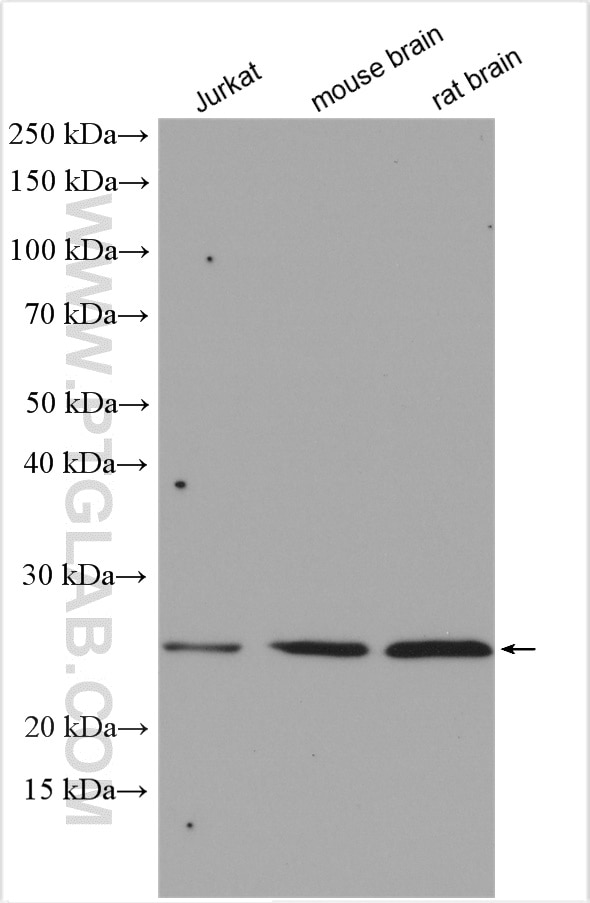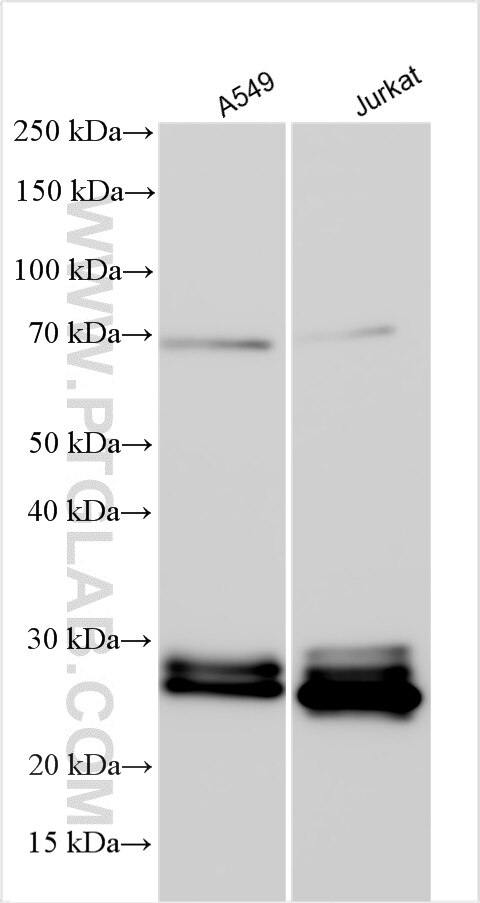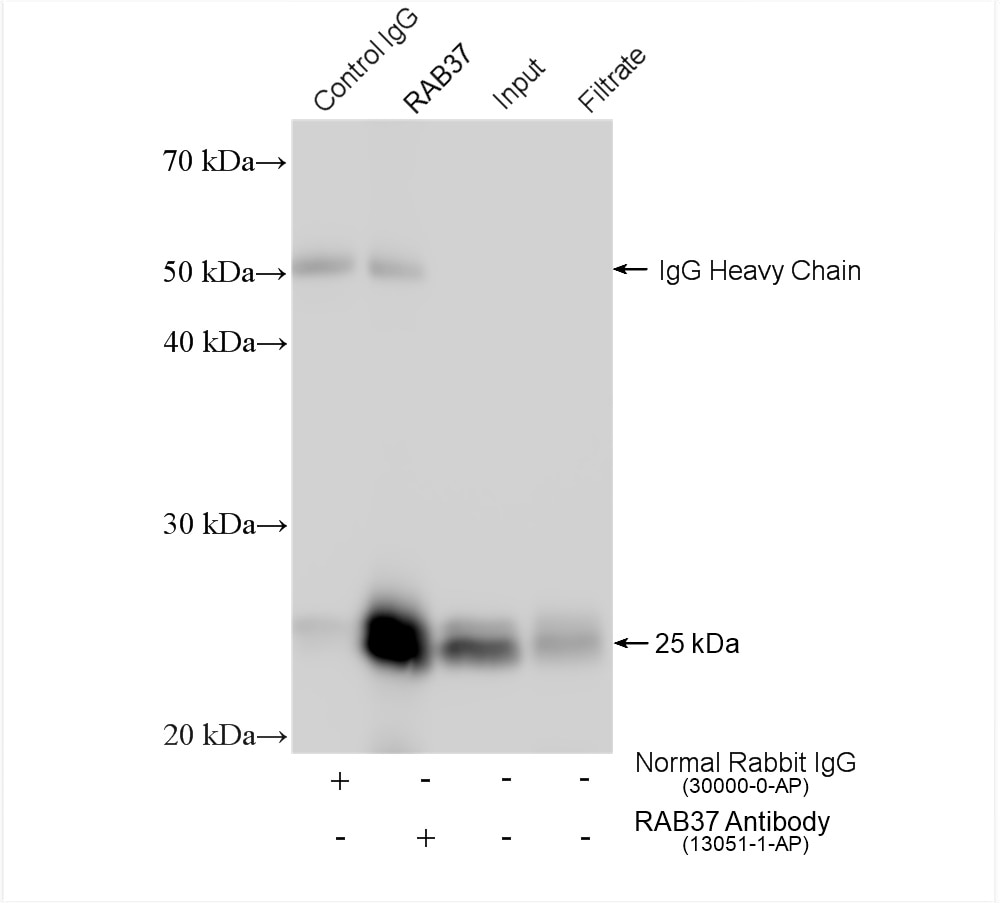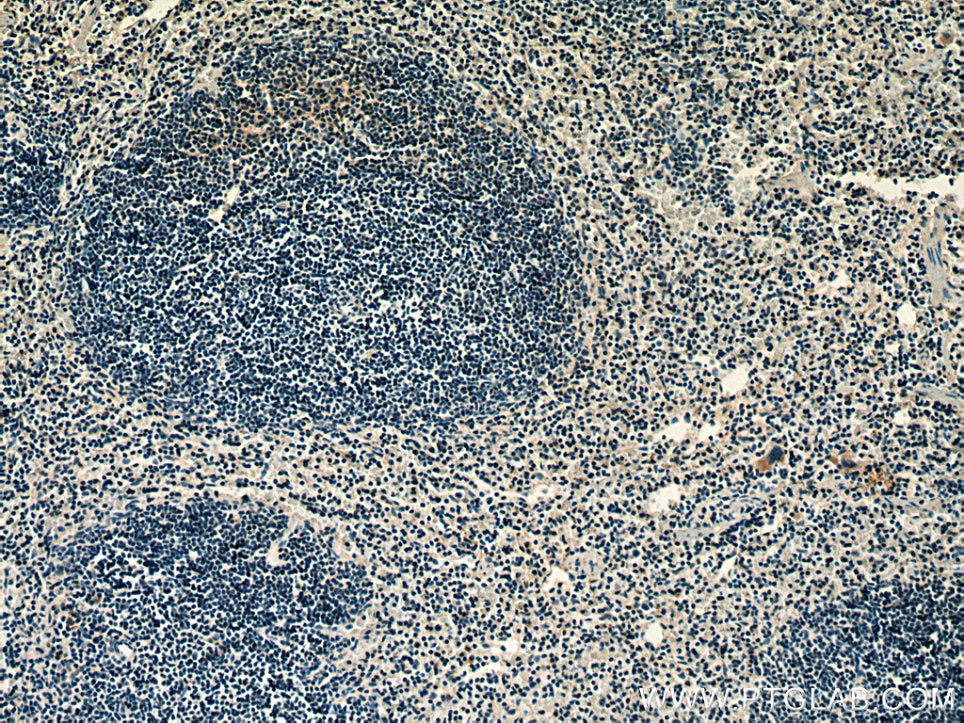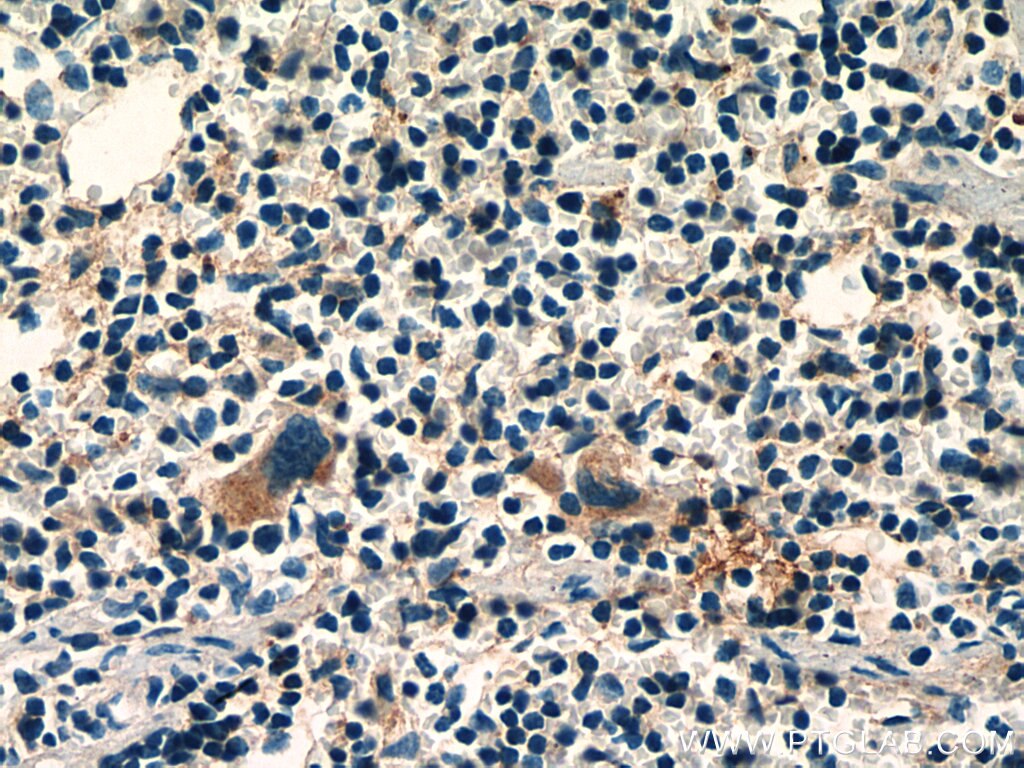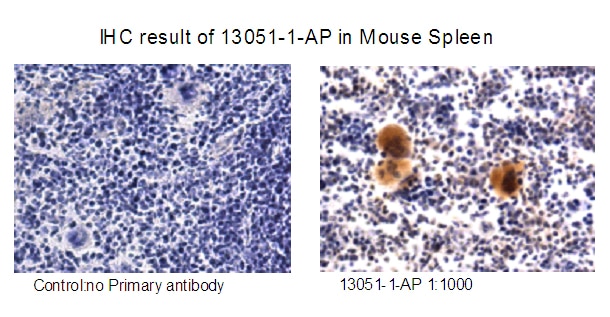Anticorps Polyclonal de lapin anti-RAB37
RAB37 Polyclonal Antibody for WB, IP, IHC, ELISA
Hôte / Isotype
Lapin / IgG
Réactivité testée
Humain, rat, souris et plus (1)
Applications
WB, IP, IF, IHC, ELISA
Conjugaison
Non conjugué
N° de cat : 13051-1-AP
Synonymes
Galerie de données de validation
Applications testées
| Résultats positifs en WB | cellules Jurkat, tissu cérébral de rat, tissu cérébral de souris |
| Résultats positifs en IP | tissu cérébral de souris, |
| Résultats positifs en IHC | tissu splénique de souris il est suggéré de démasquer l'antigène avec un tampon de TE buffer pH 9.0; (*) À défaut, 'le démasquage de l'antigène peut être 'effectué avec un tampon citrate pH 6,0. |
Dilution recommandée
| Application | Dilution |
|---|---|
| Western Blot (WB) | WB : 1:2000-1:10000 |
| Immunoprécipitation (IP) | IP : 0.5-4.0 ug for 1.0-3.0 mg of total protein lysate |
| Immunohistochimie (IHC) | IHC : 1:400-1:1000 |
| It is recommended that this reagent should be titrated in each testing system to obtain optimal results. | |
| Sample-dependent, check data in validation data gallery | |
Applications publiées
| WB | See 5 publications below |
| IHC | See 3 publications below |
| IF | See 2 publications below |
| IP | See 1 publications below |
Informations sur le produit
13051-1-AP cible RAB37 dans les applications de WB, IP, IF, IHC, ELISA et montre une réactivité avec des échantillons Humain, rat, souris
| Réactivité | Humain, rat, souris |
| Réactivité citée | canin, Humain, souris |
| Hôte / Isotype | Lapin / IgG |
| Clonalité | Polyclonal |
| Type | Anticorps |
| Immunogène | RAB37 Protéine recombinante Ag3717 |
| Nom complet | RAB37, member RAS oncogene family |
| Masse moléculaire calculée | 223 aa, 25 kDa |
| Poids moléculaire observé | 25 kDa |
| Numéro d’acquisition GenBank | BC016615 |
| Symbole du gène | RAB37 |
| Identification du gène (NCBI) | 326624 |
| Conjugaison | Non conjugué |
| Forme | Liquide |
| Méthode de purification | Purification par affinité contre l'antigène |
| Tampon de stockage | PBS avec azoture de sodium à 0,02 % et glycérol à 50 % pH 7,3 |
| Conditions de stockage | Stocker à -20°C. Stable pendant un an après l'expédition. L'aliquotage n'est pas nécessaire pour le stockage à -20oC Les 20ul contiennent 0,1% de BSA. |
Informations générales
RAB37, as a small GTPase, plays important roles in several cellular processes through intracellular membrane traffic. RAB37 can regulate insulin secretion in β-cells 7 and TNF-α secretion from activated macrophages. In allergic responses, RAB37 regulated mast cell degranulation. RAB37 has been identified to be a tumor suppressor and it regulated exocytosis of several proteins including TIMP metallopeptidase inhibitor 1 (TIMP1), secreted frizzled-related protein-1 (SFRP1) 12, thrombospondin-1 (TSP1), and soluble ST2.
Protocole
| Product Specific Protocols | |
|---|---|
| WB protocol for RAB37 antibody 13051-1-AP | Download protocol |
| IHC protocol for RAB37 antibody 13051-1-AP | Download protocol |
| IP protocol for RAB37 antibody 13051-1-AP | Download protocol |
| Standard Protocols | |
|---|---|
| Click here to view our Standard Protocols |
Publications
| Species | Application | Title |
|---|---|---|
Clin Cancer Res RAB37 Hypermethylation Regulates Metastasis and Resistance to Docetaxel-Based Induction Chemotherapy in Nasopharyngeal Carcinoma. | ||
Autophagy Secretory autophagy promotes RAB37-mediated insulin secretion under glucose stimulation both in vitro and in vivo | ||
Cell Death Differ RAB37 interacts directly with ATG5 and promotes autophagosome formation via regulating ATG5-12-16 complex assembly. | ||
Mol Cancer Secretory RAB GTPase 3C modulates IL6-STAT3 pathway to promote colon cancer metastasis and is associated with poor prognosis. | ||
Cell Rep Rab39 and its effector UACA regulate basolateral exosome release from polarized epithelial cells. | ||
Cell Rep RPGR is a guanine nucleotide exchange factor for the small GTPase RAB37 required for retinal function via autophagy regulation |
